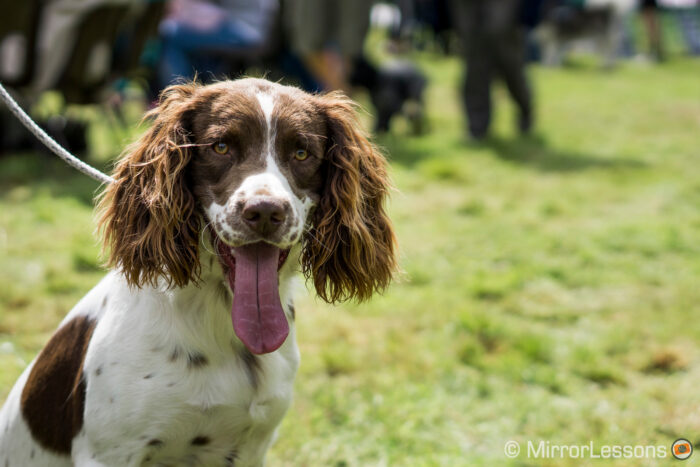Updated on: November 20th, 2019
In part 1 we saw the most advanced products on the market for stills as well as the best selection for enthusiasts and amateurs. But mirrorless cameras are also popular for movie recording, and while many of the models we mentioned have great video capabilities, here in part 2 we’re going to look at those specifically designed for video-makers.
Following the video section, you’ll find a selection of older yet more affordable models that are still on sale today, as well as a list of the most unique mirrorless products if you’re looking for something a little out of the ordinary. Finally we conclude with our favourite fixed-lens cameras.
Just like on part 1, here are a few notes about the article:
- we will update it with new cameras if we think they are worth including
- you can also give our Choosing a Mirrorless Camera article a read.
Ethics statement: All opinions expressed in this article are our own and based on our real world experience with each camera. We were not asked to write anything about these products, nor were we provided any compensation of any kind. Within the article, there are affiliate links. If you decide to buy something after clicking the link, we will receive a small commission. To know more about our ethics, you can visit our full disclosure page. Thank you!
Out best mirrorless cameras guide is composed of two parts:
- Part I: Top 3, professionals and advanced users, enthusiasts and amateurs
- You are on part II: video, on a budget, outsiders, fixed-lens cameras
Table of Contents
Best Mirrorless Cameras for Video
Best Budget Mirrorless Cameras for Beginners
The best that dare to be different
The best mirrorless fixed-lens compact cameras
Article updates
- November 2019: added information about the latest camera released, general edits
- February 2019: added first thoughts about the Lumix S1 in the video chapter, removed E-PL8
The Best Mirrorless Cameras for Video Recording
We’ve already covered models such as the A7 III, X-T3 and GH5 which are suitable for professional work, as well as more affordable cameras for those just starting out. However there a few products that are specifically designed for filmmakers. If you don’t care about stills, they are definitely worth looking at.
Panasonic GH5S
Micro Four Thirds – 10MP Multi-Aspect – ISO 160-51200 – 4K video up to 60p – internal 10-bit 4:2:2 – 240fps in Full HD – 12fps – Weather sealing – Dual SD slot – Touch screen
Main reason to get one: the most advanced model for video
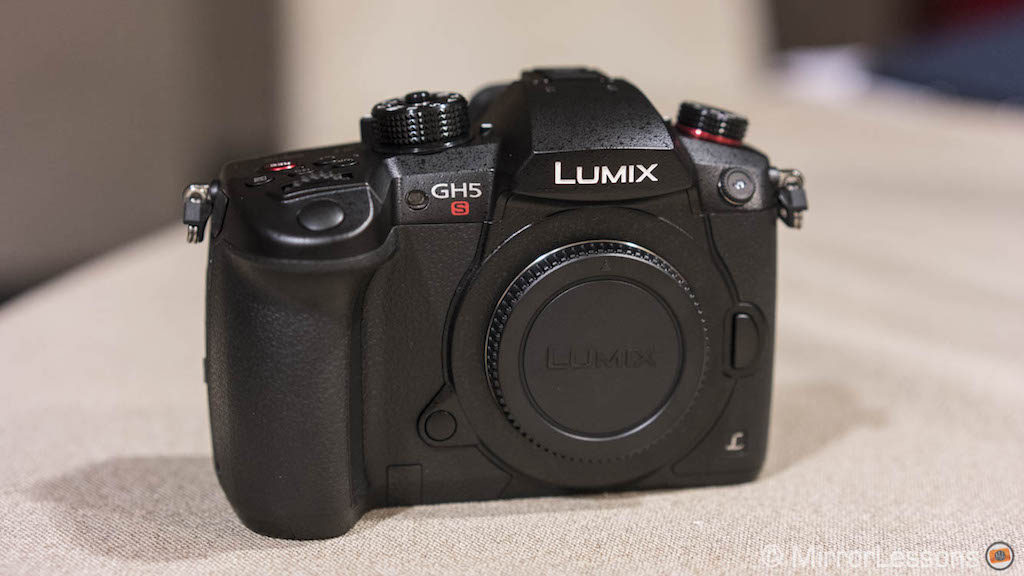
If video is what you care about the most and you want the most advanced mirrorless camera you can find, this is the one to go for.
The GH5S is a GH5 on steroids: specifications such as 4K up to 60p and 4:2:2 10-bit internal recording have been carried over but slow motion has been increased to 240fps in Full HD and it has the possibility of timecode in and out.
But what really makes a difference is the new 10MP multi-aspect sensor that uses Dual Native ISO technology to increase its sensitivity to levels never seen before on a micro four thirds camera (160-51200, or ISO 80-204800 with the extended values). Think of a GH5 minus the limitations in low light.
The 10MP of resolution may appear too low for serious still work, but it’s worth noting that the GH5S is the first micro four thirds camera to give you 14-bit RAW. The only thing missing is 5-axis stabilisation which – according to Panasonic – has been ditched because broadcast productions that deal with camera-car shots don’t like the micro-vibrations produced by IBIS.
Why the Panasonic GH5S is one of the best cameras for video:
- amazing high ISO performance for a m4/3 camera
- 4K up to 60p, or up to 30p with 10-bit 4:2:2 400Mbps internal recording
- no duration limitation
- 240fps slow motion in 1080p
- all the advanced settings and options you want from a video camera
To consider:
- no image stabilisation
- the GH5 is less expensive and shares many specifications with its sibling
Check price of the Panasonic GH5s on:
Amazon | Amazon UK | eBay | B&H Photo
Used Panasonic gear on MPB US | MPB UK
Sony A7S II
35mm – 12MP – ISO 100 – 102400 – 4K up to 30p – 120fps in Full HD – Contrast detection AF – 5fps – 5 axis stabilisation – dust and moisture resistant
Main reason to get one: high ISO performance
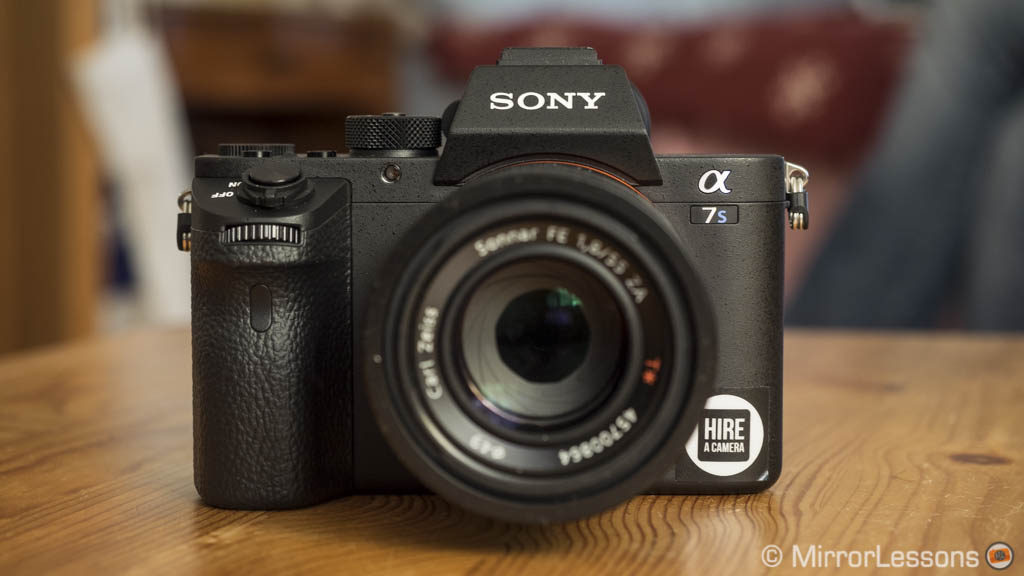
I hesitated to put the A7S II here because I think that the A7 III is the better option given how good its performance is at high ISOs and how much more practical the new model is in terms of battery life, customisation, SD card slots and so on. Plus I wouldn’t be surprised if Sony announces an A7S III later this year since the company has already updated the other two models.
That being said, if you priority is extreme low light performance and you need it now, the A7S mark II is still a valid option. The 12MP sensor delivers impressive dynamic range and high ISO performance in 4K, which is relatively clean up to 25600 and usable up to 102400. Indeed it’s no surprise that it has been used in a number of important TV productions for this reason. You also have extended values up to 409600 ISO but colour noise becomes very invasive.
The camera has lots of useful settings for filmmaking including picture profiles inherited from the Sony Cine-Alta series (with S-Log2). The internal recording is 4:2:0 8-bit unless you use the HDMI output which is 4:2:2 8-bit.
The autofocus works with contrast detection and offers good performance in good light conditions but is slower in continuous AF and low light. The internal stabilisation works on 5 axes and delivers decent results for static shots but is less effective when walking or doing more complex movements. In 1080p you can record up to 120fps but there is a heavy 2.2x crop. Being part of the second generation of Alpha 7 cameras, it uses the older NP-FW50 batteries so prepare to buy lots of spares.
Why the Sony A7S II is one of the best camera for video:
- great dynamic range and stunning low light performance
- lots of customisable picture profiles for video
- full frame and Super35 modes
- 120fps in 1080p
To consider:
- continuous autofocus is average
- poor battery life
- 2.2x crop at 120fps@1080p
Check price of the Sony A7S II on:
Amazon | Amazon UK | B&H Photo | eBay
Used Sony gear on MPB US | MPB UK
Honourable mentions and additional reads
Panasonic S1
Our experience with the Panasonic S1 is limited to the launch event, and despite having a beta firmware, it left with a very positive impression as far as video capabilities are concerned. I was surprised to see how clean the image was at 10,000 ISO and the overall colour rendering was really good. There are several picture profiles designed for video including HLG and a future paid firmware update will bring 10-bit 4:2:2 internal recording. You can record up to 60p in 4K with a 1.5x crop and up to 180fps in 1080p. As of now, it is the most advanced 35mm format camera for video.
Panasonic S1H
The most advanced full frame mirrorless camera for video is the Panasonic S1H, which was recently added to the approved camera list from Netflix. There are so many recording settings that I can’t possibly summarise them all without making this paragraph three times longer than it should be. 10-bit internal? Check. 4K 60p? Check. 5K? Check. RAW format? It should come to the HDMI output via firmware at a later date. I mean, what more could you ask for?
Sigma FP
The Sigma FP came as something of a surprise. It is very compact, yet sports a full frame sensor and 12-bit RAW video external recording at an attractive price. The video market is certainly getting better and better for indie filmmakers.
Best Budget Mirrorless Cameras for Beginners
If you are on a budget, there is no point in looking at the most recent models unless you find a special deal. Instead, you can revert to older products that may not pack the latest technology but are still worth considering given what they offer and how much they cost.
Note that prices can vary depending on special deals, bundles, instant savings, specific stores and countries. You can also check the second-hand market to find lower prices.
Best full frame mirrorless under $1000: Sony A7
35mm – 24MP – ISO 100-25600 – 1080p up to 60p – 117 phase detection AF points – 5fps – Dust and moisture resistant
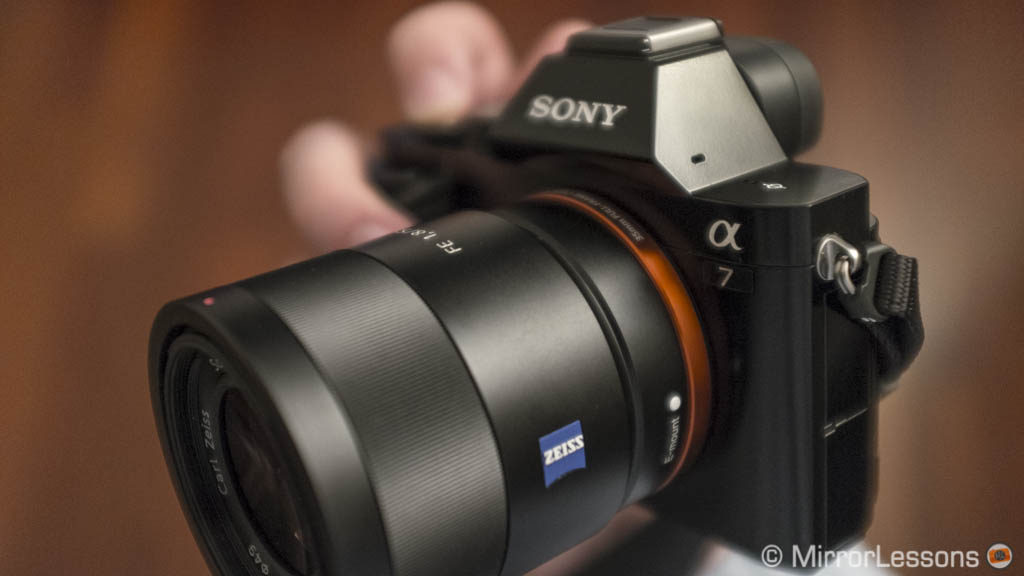
The original Sony A7 is capable of beautiful results where it matters most: image quality. At base ISO the RAW files offer lots of versatility for post-processing. It’s not the most impressive when it comes to low light performance but results are good up to 6400 ISO. Its large sensor can give you lots of shallow depth of field to play with if you mount a fast lens. And because it’s mirrorless, you can adapt lots of old manual focus primes (see this excellent guide by Philip Reeve).
The camera has all the flaws of a first generation product so you’ll have to accept and deal with them. For example I remember that my sample suffered from ghost flares with certain light sources. Metering can behave erratically and the colour rendering of the SOOC JPGs is not my favourite. More demanding photographers will miss an uncompressed RAW file option and the menu system will give you a headache from time to time.
The autofocus is more than decent with a mix of phase and contrast detection points and the body is really compact. Video is only 1080p and definitely doesn’t look as sharp as the most recent Sony cameras, but the ISO performance is good (I used it a few years ago for a contemporary dance job). Today you can find the camera for a very good price with the 28-70mm kit lens and that’s why we are talking about it here.
Why the original A7 is still worth considering today:
- affordable full frame camera
- the sensor is still good by today’s standards
- compact design despite the sensor size
To consider:
- various flaws to deal with
Check price of the Sony A7 on:
Amazon | Amazon UK | eBay | B&H Photo
Used Sony gear on MPB US | MPB UK
Best mirrorless camera under $600: Sony a6000
APS-C – 24MP – ISO 100-25600 – 179 Phase detection AF point – 11fps – 1080p video
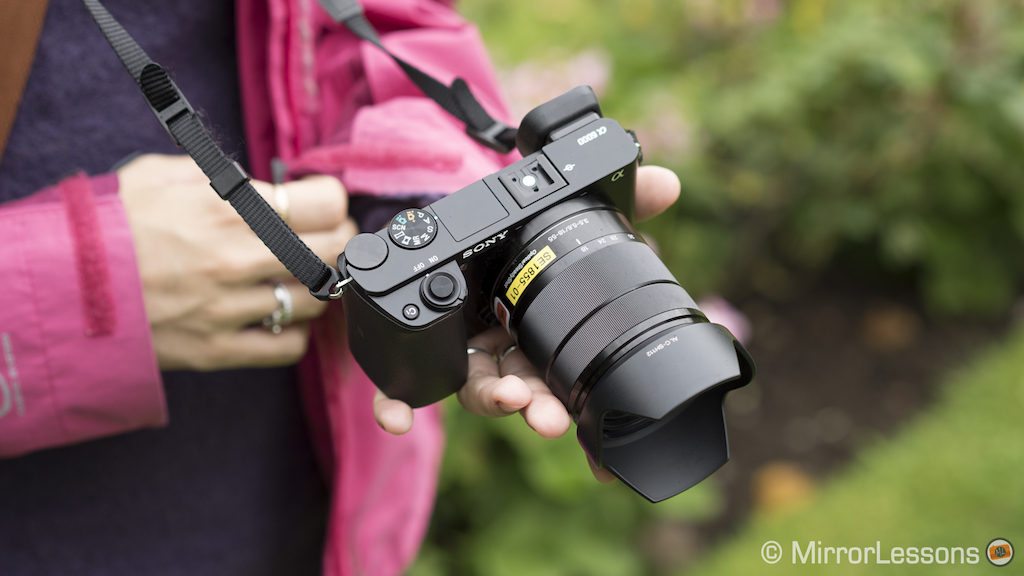
The Sony a6000 has been one of the best selling mirrorless cameras since it was released in 2014 and that’s probably the reason why Sony hasn’t announced an official successor yet.
It is light, compact and has a comfortable front grip. The image quality won’t disappoint when it comes to dynamic range and high ISOs. The hybrid AF with 179 phase detection points was a good step forward in 2014 and remains competitive today. There is no 4K but the quality in 1080p is not bad and can record up to 60fps. The camera is quite powerful as well with burst shooting up to 11fps with AF tracking.
On the downside, the viewfinder lacks resolution, the menu system is frustrating, and it could be more straightforward to use when performing simple tasks such as moving the AF point or selecting Lock-On AF (tracking). The battery life is also average. But you can easily find it at a bargain price, often in bundles with more than one lens, so it’s a tempting kit to start with.
Why the a6000 is still worth considering today:
- very light construction
- image quality and autofocus still competitive today
- affordable
To consider:
- viewfinder lacks resolution
- the logic of Sony’s menu system and interface at its worst
Check price of the Sony a6000 on:
Amazon | Amazon UK | B&H Photo | eBay
Used Sony gear on MPB US | MPB UK
Best mirrorless camera under $600: Olympus OM-D E-M10 II
Micro Four Thirds – 16MP – ISO 200-25600 – Contrast detection AF – 1080p up to 60p – 5 axis stabilisation – 8fps – Touch screen
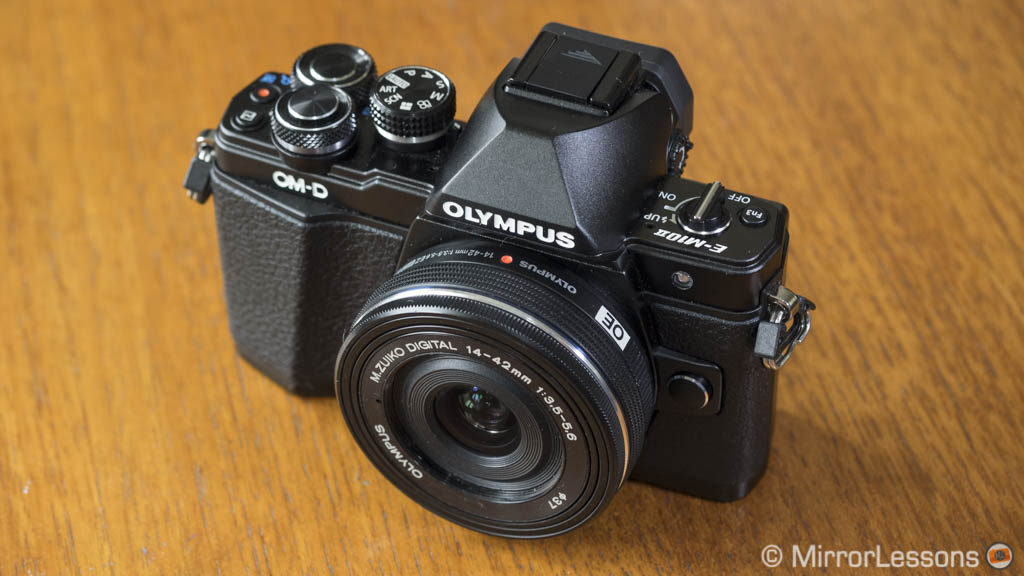
The E-M10 II is one of the most popular OM-D models and its price is now very accessible. You get a mix of some of the best features from other OM-D cameras packed into a small and light body. The dials and button layout are well conceived and the viewfinder is excellent.
One of my favourite functions is 5-axis stabilisation. It’s not the most advanced in the series but gives you better results than most of the competition. The 16MP sensor doesn’t have better or worst image quality than many other Olympus cameras but I definitely appreciate the colours and quality of the JPG engine. There are lots of extra features to play with including Focus Bracketing and Live Composite.
The menu system requires a learning curve, the autofocus is fast in continuous mode with good light, but the maximum continuous shooting speed of 4fps in C-AF is far from exciting. Finally the video quality is average (1080p only) and the slow motion at 120fps really poor. But as a holiday, street or family camera, we certainly recommend it. Plus you can find many affordable prime lenses to improve the quality and still keep your set-up compact.
Why the OM-D E-M10 II is still worth considering today:
- beautiful and practical design
- excellent image stabilisation
- lots of extra features
To consider:
- video is not its strongest point
Check price of the Olympus OM-D E-M10 II on:
Amazon | Amazon UK | eBay | B&H Photo
Used Olympus gear on MPB US | MPB UK
Best mirrorless cameras under $600: Panasonic GX85
Micro Four Thirds – 16MP – ISO 200-25600 – DfD autofocus – 4K video – 5 axis stabilisation – 8fps – Touch screen
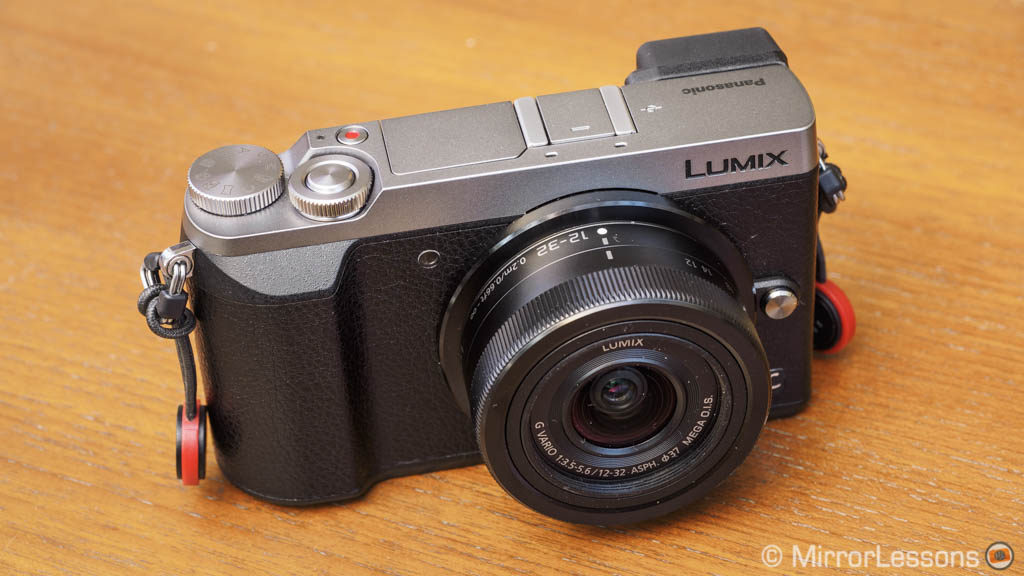
Here we have another not-so-new model that we still use on a regular basis. It is a small camera and because the viewfinder doesn’t protrude out from the top, you can easily fit it anywhere including your winter coat pocket as long as a compact lens is attached. The EVF is a little smaller than we would like but it remains usable. The touch screen allows you to perform many actions with your finger including navigating the menu.
This small camera offers some excellent performance. The 16MP sensor lacks the AA filter for added sharpness and the shutter mechanism has been re-designed to eliminate shutter shock (and it works). It has excellent 4K video and we’ve used it for many of our YouTube videos. It’s a shame that it doesn’t include the Cine-Like profiles. The GX85 is also the first Lumix to feature 5-axis stabilisation and I think it is still one of the best performers in the range. It is also compatible with Dual IS (sensor + OIS working together).
There are lots of extra features that make the camera more complete than other models including 4K Photo, 4K Live Cropping, Focus Bracketing, Stop Motion and other things. Given the current price, the GX85 is one of the most appealing choices on this list.
Why the GX85 is still worth considering today:
- compact and light design
- good image and 4K video quality
- excellent touch screen capabilities
To consider:
- the viewfinder is a bit small
- battery life is average
Check price of the Panasonic GX85 on:
Amazon | Amazon UK | eBay | B&H Photo
Used Panasonic gear on MPB US | MPB UK
Best mirrorless camera under $500: Panasonic G7
Micro Four Thirds – 16MP – ISO 200-25600 – DfD AF – 4K video – 8fps – Touch screen
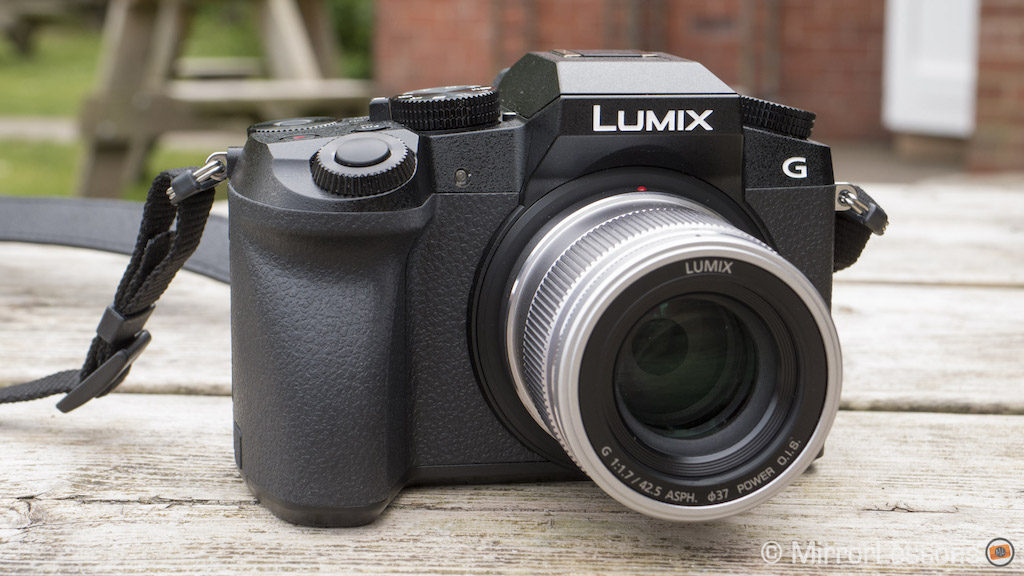
The G7 is a good hybrid camera for still and video use if you don’t want to spend a lot. The image quality is on par with other micro four thirds cameras and you get movie friendly profiles such as Cine-Like D and V. Like most Lumix models, it is packed with extra features including 4K Photo. Despite its SLR design, it isn’t a large camera by any means. It is lightweight but has a solid front grip out front that makes it very comfortable to hold, especially if you work with longer lenses.
The autofocus is based on the old DfD system so don’t expect miracles with difficult subjects or challenging light conditions, but it provides excellent speed and accuracy otherwise. There is a mic input but sadly no headphones output. The rear screen is touch sensitive and the camera is not at all difficult to use as it provides a great level of customisation. The viewfinder has good clarity and resolution but the corners appear a bit soft.
The only thing missing by today’s micro four thirds standards is sensor stabilisation, so you have to rely on lenses with OIS, which may give you jittering for hand-held video recording.
Why the Panasonic G7 is still worth considering today:
- ergonomics design that doesn’t sacrifice size and weight
- excellent 4K video, 4K photo and tons of extra features as usual
- Easy to use with good customisation
To consider:
- no in-body stabilisation
Check price of the Panasonic G7 on:
Amazon | Amazon UK | eBay | B&H Photo
Used Panasonic gear on MPB US | MPB UK
Honorable mentions and additional reads
Sony a5100
It’s more or less an a6000 but a bit smaller with no viewfinder. It shares the same sensor, autofocus system and video capabilities but has a slower maximum burst speed of 6fps. It does have a touch screen though. The truth is you can often find the a6000 for a very similar price and I think it’s a better bargain that this one, unless you can find it for a significantly lower price.
Panasonic GX850
I’ve used the adjectives compact, small and lightweight quite a lot but the GX850 is ridiculously small by comparison. It shares many of the features found on the GX85 including the sensor, DfD autofocus and 4K video. It lacks a viewfinder, a hot-shoe mount and in-body stabilisation, but the screen can be tilted 180°. The reason is the same here as well: at the time of writing, you can find a GX85 for a very similar price and that’s what I would recommend, unless the smaller size is what you need more than anything else.
Fujifilm X-A7
The Fuji entry level segment gets an updated sensor, an improved autofocus system with advanced face and eye detection, better video specs, a microphone input and USB charging support.
Fujifilm X-T100
The X-T100 is basically an X-A5 with a viewfinder and an SLR design. It has the same 24MP Bayer sensor, hybrid autofocus system and 4K video at 15fps. The price is competitive, the IQ is good but the AF is disappointing. We think that the cameras listed above give you more for the same price.
Additional reads
- Sony a6000 vs a6300 – The complete comparison
- Olympus OM-D E-M10 II vs E-M10 III – The complete comparison
- Panasonic GX85 vs G7 – The complete comparison
- Panasonic GX85 vs GX850 – The complete comparison
- Fujifilm X-A3 vs X-A5 – Five key aspects analysed
- Fujifilm X-T100 vs X-T20 – The complete comparison
The best that dare to be different
Most of the cameras I’ve mentioned up until now have distinctive characteristics that set them apart such as sensor format, video resolution, ISO sensitivity, design, and size but what about cameras that are truly different, that have something no other camera has? Let’s have a look at some of the best “outsiders” in the mirrorless world.
Unique sensor technology: Sigma SD and DP Quattro
APS-C / APS-C H – 30MP/38MP – ISO 100-6400 – Contrast detection AF
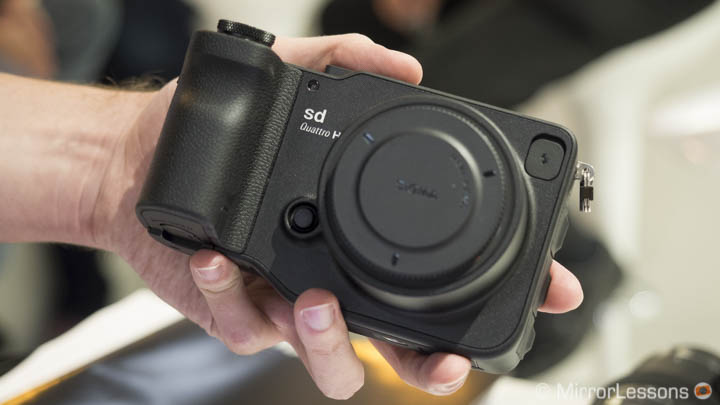
They’re slow. The RAW files aren’t overly flexible when it comes to shadow/highlight recovery. High ISO performance is limited. The design is a bit awkward and the battery doesn’t last for long. But when you see the colours and the level of detail the Foveon sensor can produce (we’re talking medium format quality here), you can easily forgive everything else. Among all the products I’ve listed here, the Sigma Quattro is the one whose image quality truly stands out from the crowd. The black and white results can also be impressive, and apparently the previous generation Merrill was even better, but it is now discontinued.
Sigma currently offers a range of four fixed lens cameras (DP series) or two interchangeable lens models (SD series). With the latter you can take advantage of the entire Sigma DSLR lens catalogue. It’s not for everyone, but it won’t cost you a fortune to try it out as the cameras are reasonably priced.
Why the Sigma Quattro series stands out:
- stunning colours and detail that most and more expensive cameras can’t match
- affordable
- the entire Sigma lens range to choose from (for the SD models)
To consider:
- limited low light performance and RAW file flexibility
- proprietary files that require Sigma’s software
- slow operation
Check price of the Sigma SD and DP Quattro cameras on:
Amazon | Amazon UK | eBay | B&H Photo
Just black and white: Leica M Monochrome (Typ 262)
35mm format – 24MP monocromatic – ISO 320-12500 – 1080p video – Manual focus – 3fps – Splash and dust proof

If there is one brand that dares to be different, it is Leica. It cares about tradition rather than trying to keep up with the latest technological innovations. The M-D doesn’t have a rear LCD screen and the most recent M10 ditched the video specifications completely. But for this section, I decided to pick the M Monochrom.
As the name suggest, it’s a digital camera that only shoots black and white images because the sensor lacks a colour filter. As a result it produces some of the richest grey tones I’ve seen, especially in the mid-range. The performance at high ISOs is quite good with a pleasant organic grain. Like all M models, it’s manual focus, uses an optical rangefinder and has a solid build quality that increases the weight of the camera. And let’s not forget that the M lenses are among the best on the planet.
Is it worth it? It’s expensive and you may wonder if it makes sense in an age when you can go from colour to monochrome and back with a simple click on your computer. Well, I think the biggest contribution this camera makes is that it forces you to think in black and white, because you have no choice. It’s silly and perhaps unnecessary, but at the same time, quite fascinating.
Why the Leica M Monochrom stands out:
- it has a unique monochrome sensor that forces you to think in black and white all the time
- the M body + M lens combination is always a pleasure to use
To consider:
- there are less expensive ways to produce nice black and white images
Check price of the Leica M Monochrom (Typ 262) on:
A modern rangefinder: Fujifilm X-Pro2
APS-C – 24MP X-Trans III – ISO 100-51200 – 4K video – Hybrid AF – 8fps – Weather sealing – Dual SD slot
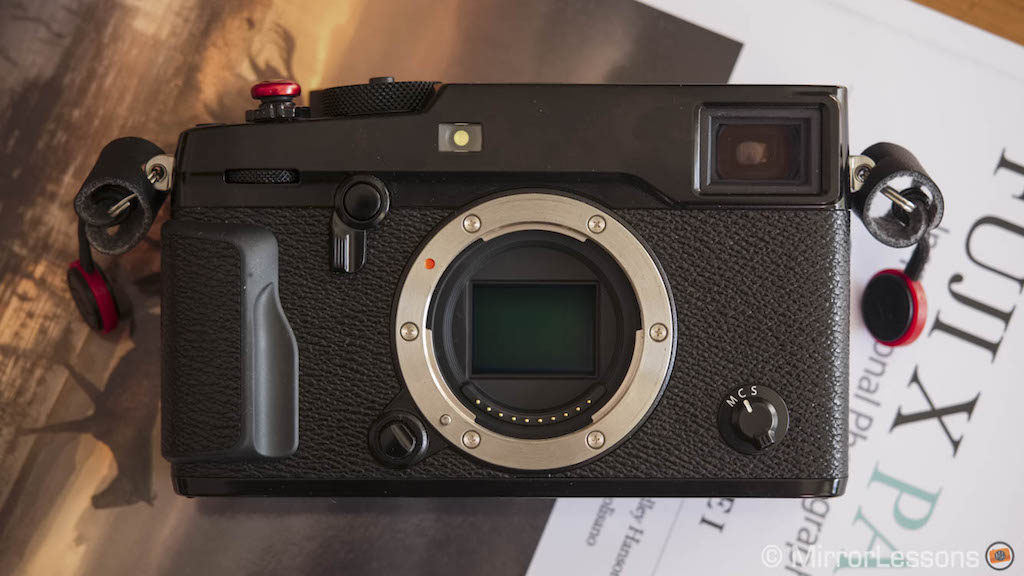
Note: the X-Pro3 has been released. It has a “hidden” LCD screen on the rear that can be tilted dow to 180˚, the same sensor and tech of the X-T3 and a new film simulation mode.
The Fujifilm X-Pro2 shares many things with the X-T2 including the sensor, exposure dials and autofocus and it too receives lots of firmware updates. But the most interesting characteristic is something no other camera has except for Fuji’s own X100 series: a hybrid viewfinder.
The optical viewfinder is a Reverse Galilean type with an equivalent field of view of approximately 24mm. With shorter focal lengths you won’t see the entire composition whereas with longer focal lengths (up to 90mm) you can see outside the frame, something that street photographers appreciate because it lets them anticipate the moment. The OVF displays white rectangles to show you the edges of your real field of view and also corrects parallax of both the frame and AF point.
The EVF is smaller than the X-T2’s and has less magnification but it maintains a good resolution and fast refresh rate. There is also an ERF (Electronic Rangefinder), a tiny LCD panel that once activated helps with manual focus assists such as magnification or Digital Split Image when using the OVF.
It’s more of a niche product, and you have to accept a few drawbacks like the missing tilting/touch screen. But if you like optical viewfinders and want the convenience of an electronic VF, the X-Pro2 gives you the best of both worlds and allows you to switch between the two in an instant thanks to the front lever.
Why the Fujifilm X-Pro2 is worth considering:
- unique hybrid viewfinder
- lovely “analog” experience thanks to the various dials
- the same sensor and autofocus as the X-T2
To consider:
- no tilting / touch screen
Check price of the Fujifilm X-Pro2 on:
Amazon | Amazon UK | eBay | B&H Photo
Used Fujifilm gear on MPB US | MPB UK
All about beauty: Olympus Pen F
Micro Four Thirds – 20MP – ISO 200-25600 – Contrast detection AF – 1080p video – 5 axis stabilisation – 10fps – Touch screen
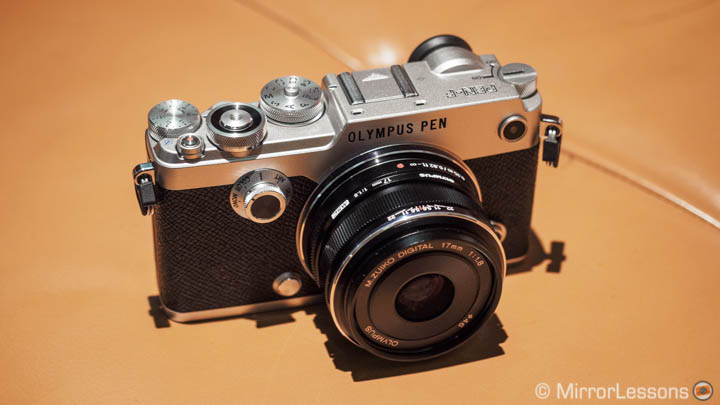
The Pen F is no different to other Olympus cameras when it comes to performance and technology. It has a good 20MP sensor, is packed with tons of features including the High Res Shot mode (80MP) as well as one of the most advanced 5-axis stabilisation systems. So why list it here? Because of its design.
Most Olympus products have a lovely look but the Pen F takes it to a new level. You really feel that the brand has put a lot of effort into it. It delivers a unique user experience thanks to its refined construction and metal dials. It has exclusive colour and monochrome profiles that you can customise while shooting and I love the black and white results. It’s a shame that some of these dials, like the colour selector on front, can’t be customised for other uses such as changing the ISO sensitivity though.
When it was released, the price was rather high but now it can be found for less. If you place a lot of importance on how a camera looks, the beautiful design of the Pen F may motivate you to shoot with it every day.
Why the Olympus Pen F is worth considering:
- timeless design and great user experience
- unique colour and monochrome profile settings
- great image stabilisation and lots of extra features
To consider:
- video quality is average
- battery life is not great
Check price of the Olympus Pen F on:
Amazon | Amazon UK | B&H Photo | eBay
Used Olympus gear on MPB US | MPB UK
The best mirrorless fixed-lens compact cameras
The term mirrorless as we use it today is intended for interchangeable-lens systems. However the same brands also produce premium fixed-lens compact cameras that often share the same technology as their interchangeable-lens counterparts. This is why I thought it was a good idea to add them to the list. Plus some of these models are among my favourites!
My desert island camera: Fujifilm X100F
APS-C – 24MP X-Trans III – 23mm f2 lens – ISO 100-51200 – 1080p up to 60p – Hybrid AF – 8fps
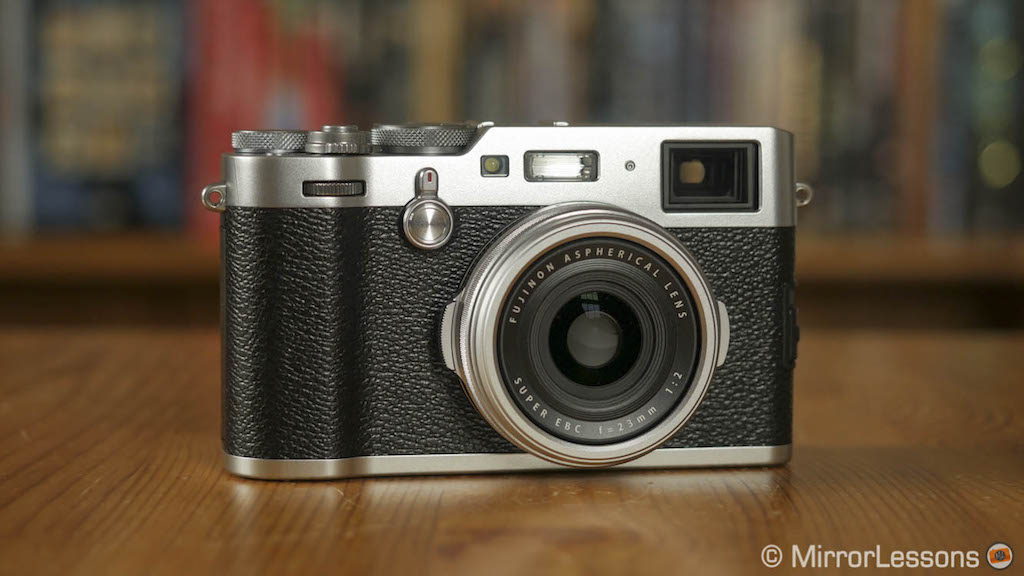
When I tried the X100S in 2013, it was love at first sight. The X100F is the fourth edition and is the best yet. If I were to give a reason why I like it so much, it comes down to the fine balance between a compact design, gorgeous retro look, handy controls and of course good image quality.
The X100F has the same sensor and AF system as the X-T2/X-Pro2 and features a hybrid viewfinder similar to the X-Pro2 we mentioned earlier – another reason why this camera is more unique than any other in the category. The buttons and dials are nice to use and include clever solutions such as the dual shutter speed / ISO dial and the AF Joystick on the rear.
The only “good but not great point” is the lens. It has a 35mm equivalent field of view, offers good optical quality but has a slow AF motor that causes the camera to mis-focus on occasion. A tilting/touch screen and weather sealing would be welcome upgrades on the fifth iteration as well.
Why the Fujifilm X100F is one of the best compact cameras:
- compact with a beautiful and practical design
- same sensor and autofocus tech as the X-T2/X-Pro2
- hybrid viewfinder
To consider:
- no tilting / touch screen
- lens AF motor can be slow
Check price of the Fujifilm X100F on:
Amazon | Amazon UK | eBay | B&H Photo
Used Fujifilm gear on MPB US | MPB UK
A great street companion: Ricoh GR II
APS-C – 16MP – 18.3mm f2.8 lens – ISO 100-25600 – 1080p up to 30p – Contrast detection AF – 4fps
Note: Ricoh recently announced the full specifications of the GR III which has a new sensor and re-designed lens. We haven’t tested it yet but you can find more information about it here.
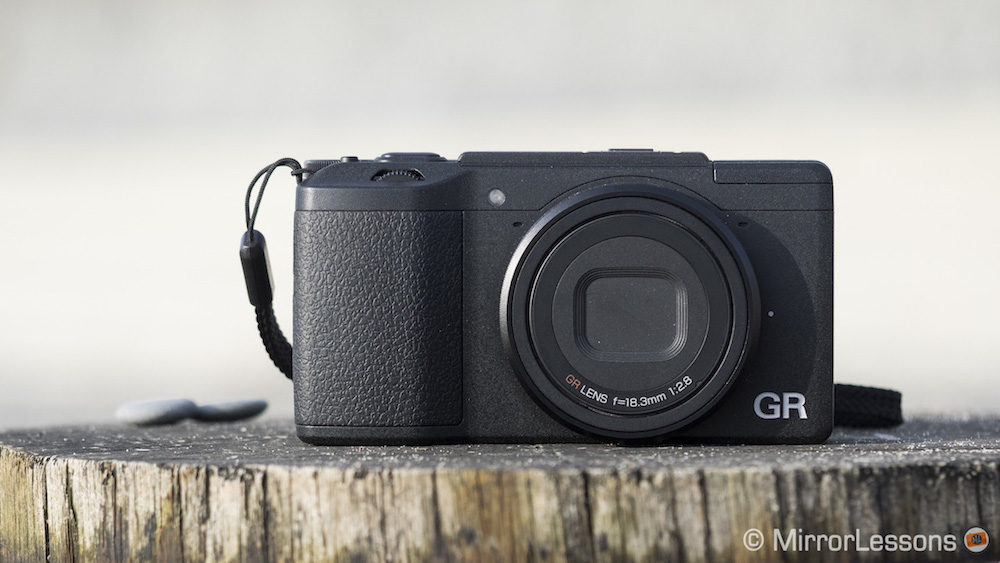
The Ricoh GR mark II may not be as stylish as the X100F but it is anything but inferior. Its design reminds you more of a classic compact camera but the button layout is clever and really straightforward. The Snap focus mode is a great feature for those who enjoy working with zone focus. Manual focusing isn’t quite as enjoyable because of the lack of a proper focus ring (you need to use the rear dial instead).
The sensor and lens combination renders some of the sharpest results I’ve seen from an APS-C camera and the black and white profiles have lots of character with punchy contrast, deep blacks and a film-like grain. The camera is really small but the LCD screen is fixed and there is no viewfinder unless you buy the optional GV-1 optical finder. The GR II includes interesting extra features like Interval Composite which works exactly like the Live Composite mode on Olympus cameras.
Why the Ricoh GR II is one of the best compact camera:
- stunning sharpness thanks to the lens+sensor combination
- intuitive to use with clever features
- great monochrome profiles
To consider:
- no tilting screen and built-in viewfinder
Check price of the Ricoh GR II on:
Amazon | Amazon UK | eBay | B&H Photo
Full frame quality in your pocket: Sony RX1R II
35mm format – 42MP BSI sensor – 35mm f2 lens – ISO 100-25600 – 1080p up to 60p – 399 phase detection AF points – 5fps
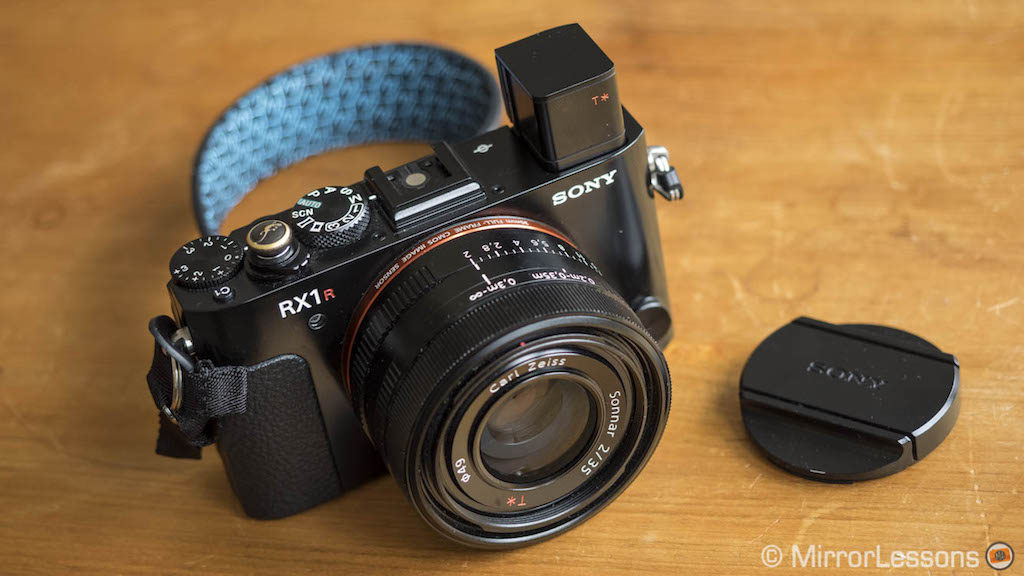
Think about all the good things I wrote about the A7R III sensor in part I, add to this one of the best 35mm lenses you can find and you have the RX1R mark II: a compact camera with superb image quality.
The camera features a 42MP BSI sensor (which is actually the same as the A7R II, not A7r III, but they are very similar) that delivers impressive dynamic range, details (no AA filter) and good high ISO performance. But it’s not just the sensor. The Zeiss Sonnar lens is a little gem capable of superior optical quality when it comes to sharpness. In fact the corners are almost as good as the centre. It has an attractive bokeh and the surprising capacity to separate the subject from the background, with smooth transitions from in-focus to out-of-focus areas. The only weak point is rainbow flares which appear frequently and the lack of a lens hood. (Apparently Sony thought that the camera wasn’t “expensive” enough to include one!)
The RX1R II also uses the same AF as the A7R II (399 phase detection points). It has a built-in viewfinder that you can pop-up via the dedicated button. It is small but remains useful thanks to its good magnification and resolution. It’s a shame that the ergonomics and usability are less impressive. Sony prioritised compactness but in doing so sacrificed a better grip, more space between the various buttons and dials, and a larger battery. There is no stabilisation and I often found that shots taken under 1/100s would end up slightly blurry, so exercise some caution.
Why the Sony RX1r II is one of the best compact cameras:
- one of the best sensor and lens combinations there is
- compact and lightweight
- built-in pop-up viewfinder
To consider:
- ergonomics and ease of use are not great
- no stabilisation
- limited battery life
Check price of the Sony RX1R II on:
Used Sony gear on MPB US | MPB UK
My favourite Leica: Leica Q
35mm format – 24MP sensor – 28mm f1.7 lens with OIS – ISO 100-50000 – 1080p up to 60p – Contrast detection AF – 10fps – Touch screen
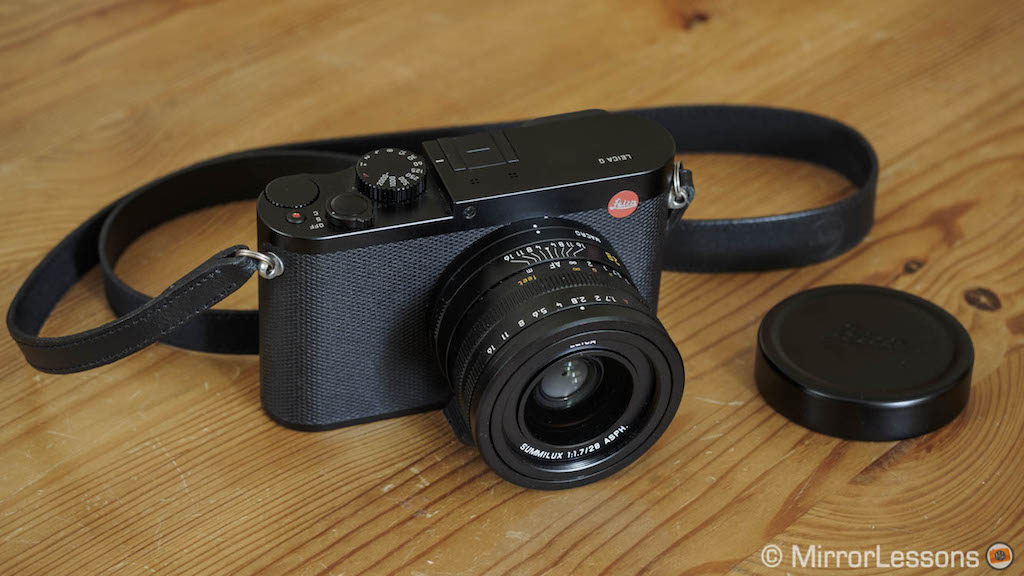
Of all the Leicas I have tested, the Leica Q is the one I really fell in love with. From the second you pick it up, you become immediately familiar with it. It’s simple, straightforward to use and all the buttons feel as if they’re in the right place. The build quality is at the usual high standard you’d expect from a Leica. The viewfinder is excellent and the rear screen is fixed with touch sensitivity.
The 24MP sensor doesn’t give you the same performance as Sony cameras when it comes to dynamic range, but I prefer the colour rendering of the Q. The 28mm f/1.7 lens is a stellar performer with excellent sharpness wide open, good corner to corner performance and a pleasant bokeh. There is also a macro mode to focus as close as 17cm. The lens includes optical stabilisation and works well up to 1/2s. The contrast detection autofocus is fast enough for most uses and the continuous shooting speed goes up to 10fps.
The quality of the video footage is decent and you can activate software stabilisation. The leaf shutter is limited to 1/2000s, so to go faster you have to revert to the electronic shutter. On the negative side, battery life is weak and there are a few annoying quirks like the limited shutter speed when shooting at high ISOs.
Why the Leica Q is one of the best compact cameras:
- beautiful colours and stellar 28mm lens
- premium build quality and straightforward to use
- good optical stabilisation
To consider:
- sensor is not as good as the Sony’s
- limited battery life
Check price of the Leica Q on:
Amazon | Amazon UK | eBay | B&H Photo
Panasonic LX100
Micro Four Thirds – 16MP Multi-Aspect sensor – 10.9-34mm f/1.7-2.8 lens with OIS – ISO 100-25600 – 4K up to 30p – DfD AF – 11fps
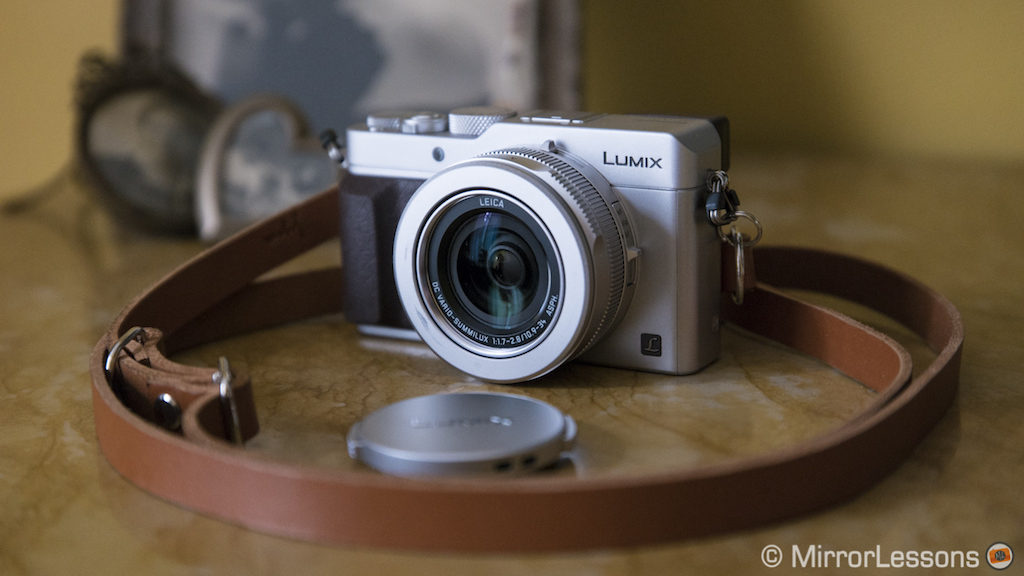
Note: Panasonic recently announced the LX100 II with a new sensor, more photo style profiles, touch screen capabilities, USB charging and Bluetooth. We haven’t tested the new camera yet but you can check out our comparison preview to find out more about the main differences between the mark 1 and mark 2 models.
Most large sensor premium compact cameras come with a prime lens, but what about zooms? Well the LX100 features a 24-75mm (equivalent by 35mm format standard) with a f/1.7 to f/2.8 aperture. Released in 2014, it remains one of the most interesting choices out there.
The LX100 features a 16MP multi-aspect ratio sensor that allows you to switch between different formats without changing the diagonal angle of view. But once again it’s the lens that stands out with a pleasant bokeh, excellent sharpness and great performance in macro mode. The aperture is not constant but remains a decent f/2.8 at 75mm. The only thing to be aware of is that we find the electronic mechanism of the zoom a bit weak so it’s best to treat it with care. The optical stabilisation works well down to 1/8s.
Being a Panasonic, the LX100 comes with a generous number of extra features including 4K video and 4K Photo. The aesthetics are gorgeous and you will appreciate working with a proper aperture ring and shutter speed dial. It’s really fun to use, has a built-in viewfinder and the only thing missing is a tilting/touch screen.
Why the Panasonic LX100 is one of the best compact cameras:
- high quality fast zoom lens
- premium design
- lots of functionalities
To consider:
- it would have been perfect with a touch/tilting LCD monitor
- a mark II version has been announced recently
Check price of the Panasonic LX100 on:
Amazon | Amazon UK | eBay | B&H Photo
Sony RX100 series
1-inch – 20.1MP – OIS – ISO 125-25600 – other specs vary depending on the specific model
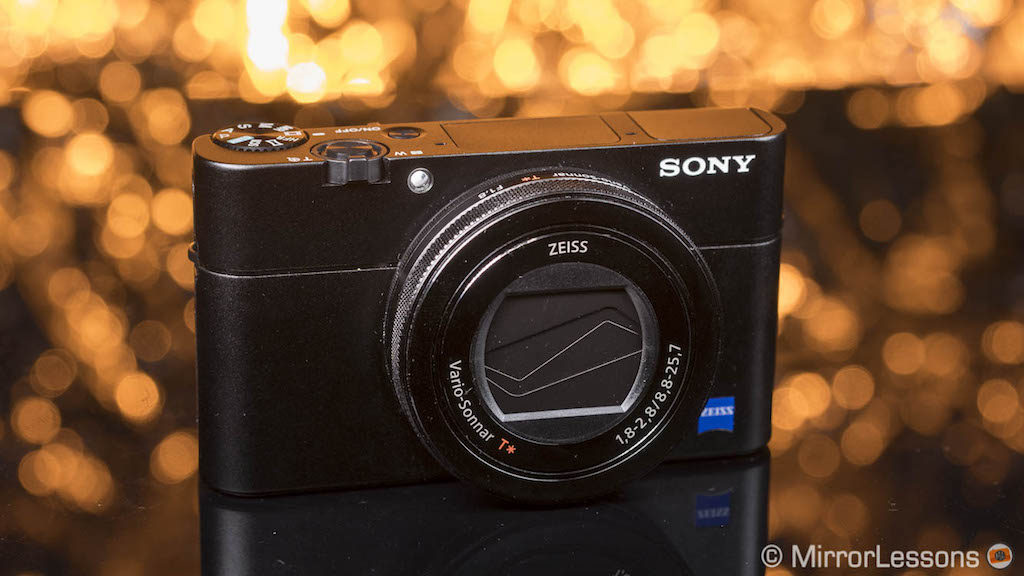
The RX100 models look and feel like your average compact cameras but the effort Sony has made to pack these cameras with advanced specifications deserves a mention. Between the slow motion capabilities and the quality of the 1-inch sensor, this series is getting more and more powerful with every release, yet it manages to maintain the same pocketable dimensions.
There are now six iterations, separated by features such as the pop-up EVF (mk3 onward), 4K and slow motion video up to 1000fps (mk4 onward), phase detection AF and 24fps burst (mk5 onward) and the zoom lens. The latest mark VI version is probably the most interesting as it inherits all of the above and introduces a new 24-200mm f2.8-4 equivalent lens, which I find more interesting than the previous 24-70 f1.8-2.8. You lose the fast aperture but the wider zoom range is a plus for this type of product.
As for choosing which model to buy, it all depends on your budget and needs. If you don’t care about video, or you are fine with good Full HD quality, go for the RX100 III. The 4K video quality of its successors is excellent but is limited to 5min per clip because of overheating issues. If you really want to have fun with this camera, then consider at least the mark IV. The HFR mode which allows you to record video up to 1000fps lets you capture great shots you won’t get with any other camera mentioned in this entire article. Granted the quality decreases as you increase the frame rate, but a few years ago no one would have ever dreamed of seeing such a feature on this type of product.
The mk5 and mk6 bring phase detection AF which I think is more useful in video mode, where the contrast detection of previous models is much slower. The last two models can also shoot at an impressive 24fps. Keep in mind that the more powerful the model is, the worse the battery life becomes as they all use the same type.
Why the Sony RX100 series is one of the best compact options:
- excellent image quality for a 1-inch sensor
- powerful features inside the latest models including slow motion up to 1000fps, 24fps and 4K video
- truly pocketable yet has everything you need including a pop-up EVF (mk3 onward)
To consider:
- limited battery life
- the latest models are more expensive
Check price of the Sony RX100 series on:
Amazon | Amazon UK | eBay | B&H Photo
Honorable mentions and additional reads
Sigma DP Quattro
I already talked about the Sigma DP Quattro series in the previous chapter but I wanted to remind you that Sigma has four fixed lens compact cameras with an APS-C Foveon sensor (30MP output) called the DP0, DP1, DP2 and DP3. They each have a different focal length (21mm, 28mm, 45mm and 90mm equivalent respectively).
Leica Q2
The Q Typ 116 successor has a new sensor (47MP), weather-sealing, an improved viewfinder, a larger battery, an upgraded contrast detection AF with more areas (225), higher shutter speeds thanks to the electronic shutter and 4K video capabilities.
Fujifilm X70
This is the only discontinued camera we’re mentioning because you may still find it online or second hand and it’s worth your consideration. It is more compact than the X100 series, has a good 16MP APS-C X-Trans II sensor, comes with a 19.5mm lens (28mm equivalent) and has manual controls that are lovely to use as always. There is no viewfinder but there is a handy touch screen.
Fujifilm XF10
The XF10 is the latest model from the Japanese brand and can be considered a streamlined version of the X70 and a direct competitor for the Ricoh GR II. It loses the old fashioned exposure dials and rings, lacks a tilting LCD but includes more touch gestures on the rear monitor, Bluetooth connectivity, a Snapshot mode (similar to Ricoh’s Snap Focus) and uses a 24MP Bayer rather than an X-Trans sensor. We haven’t yet tested it so it’s a bit too early to say whether or not it belongs on the main list.
Additional reads:
- Fujifilm X100T vs X100F – The complete comparison
- Fujifilm X70 vs Ricoh GR II – The complete comparison
- Fujifilm XF10 vs X70 – Comparison preview
Go back to Part I
You may also like:


